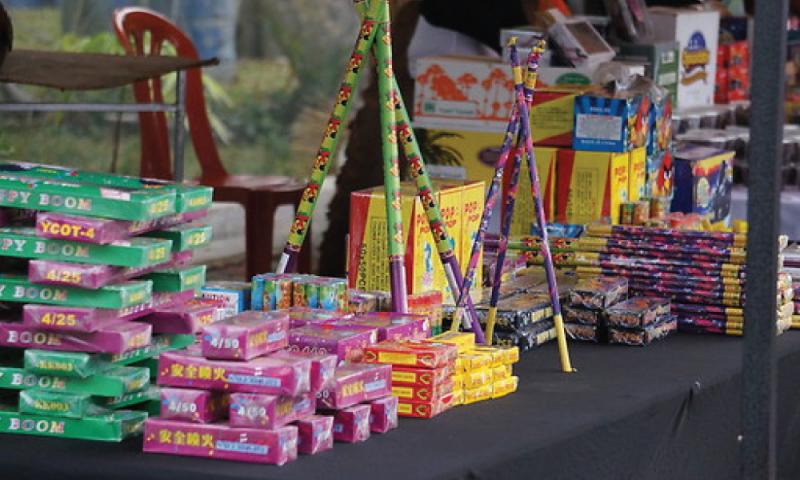LETTER | Fireworks are a thing of nightmares, not celebrations
LETTER | During the multiple New Year festivities held by the various ethnicities in the country, animals are most adversely affected by the booming, explosive sound of fireworks and firecrackers.
Firework displays are festive and celebratory for humans, but fireworks are terrifying to companion animals with many dogs and cats fleeing in terror from their deafening blasts.
Many pets end up lost or end up as victims of road accidents. Irreversible hearing damage can also result from prolonged exposure to these explosive devices, especially in canines when close to such loud noises.
Various reactions often seen in household pets range from trembling or shaking, constant pacing or restlessness, and fear, leading to refusal of food and loss of appetite.
Apart from domesticated pets, animals in urban environments, on farms, those and confined in other spaces are frequently impacted by fireworks and other explosive materials, which can produce sparks, flames, and fumes.
A recent incident had a pair of squirrels scurrying into the home of a resident when there was an explosion of firecrackers nearby.
The house owner was startled by the sudden confrontation but let one squirrel escape unscathed as it hurried to get away from the terrible explosion, while the other squirrel took cover underneath a wooden shelf.
Wildlife rescue organisations claim that loud and startling fireworks can cause a high degree of stress to birds and other animals, causing them to abandon their young. Many may not know how to return to their nests once the noise subsides, leaving their young defenceless and starving.
Different species are affected differently by fireworks. The harm caused to invertebrates and small vertebrates by fireworks has not been as thoroughly investigated as it has been for house pets and other larger animals.
A larger number of small animals and invertebrates are affected by the sounds of explosions. Firecrackers and fireworks explosions can also cause them stress and harm.
Besides animals, fireworks display can negatively impact humans, particularly babies, as mothers frequently struggle to put their babies to sleep, only to be awakened by loud explosions.
Air pollution
It is important to consider how fireworks may affect human health as well as the quality of the air. According to an article by the European Respiratory Society, sulphur and carbon are components of all pyrotechnics and are necessary for their burning.
Moreover, a number of substances are added to fireworks such as potassium perchlorate, arsenic, manganese, sodium oxalate, aluminium, iron dust powder, and barium nitrate which serve as additional colours, oxidisers, and stabilisers.
Sulphur dioxide, carbon dioxide, carbon monoxide, and particulate matter, along with various metal salts such as cadmium, manganese, and aluminium, are among the air pollutants generated when fireworks are lit.
The consensus among experts is that urban air pollution caused by fireworks has a significant negative impact on air quality. Dr S Geminn Louis Apostol, an environmental health specialist at the Ateneo School of Medicine and Public Health, advises against excessive use of firecrackers and fireworks due to their contribution to air pollutants.
These pollutants can exacerbate or even cause respiratory conditions such as sinusitis, bronchitis, asthma, laryngitis, pneumonia, and rhinitis, especially for individuals with asthma and chronic obstructive pulmonary disease (COPD).
Vulnerable populations such as those with pre-existing medical conditions, the elderly, and children are particularly at risk.
Among the pollutants emitted, carbon dioxide and nitrogen oxide are notable greenhouse gases contributing to climate change and global warming. Therefore, limiting the use of fireworks can not only improve air quality but also mitigate the impact on the environment.
The implementation of strategies to control the use of fireworks, aimed at improving air quality, has the potential to reduce their negative impact on human respiratory health in exposed individuals.
Over the years, there have long been heated arguments between those who enjoy firecrackers and those who oppose explosive displays.
The Consumers Association of Penang (CAP) has expressed concerns about the issue of firecrackers and fireworks which have been illegal all these years and were legalised recently. People, animals, and the environment would all benefit from the absence of toxic and contaminating firecrackers and fireworks.
Since money would be better off being used for everyday necessities like food, people should carefully weigh their options before spending it on pyrotechnics.
Understanding the impact is necessary in all respects, including the economic, human, and animal welfare aspects. More thought should be given to these.
The views expressed here are those of the author/contributor and do not necessarily represent the views of Malaysiakini.
RM12.50 / month
- Unlimited access to award-winning journalism
- Comment and share your opinions on all our articles
- Gift interesting stories to your friends
- Tax deductable
